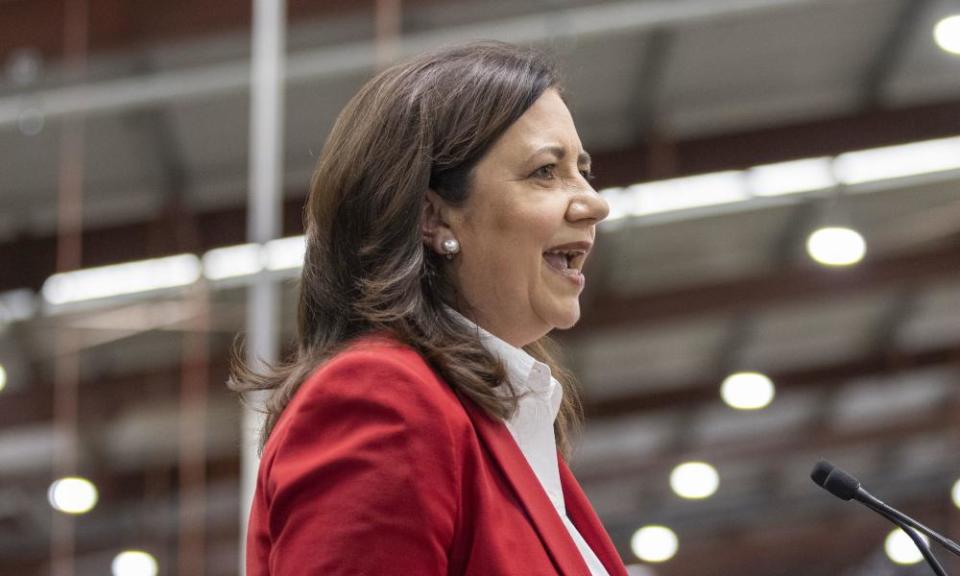Labor insiders spooked in Queensland as polls fail to indicate clear path to election victory

In the final week of the Queensland election campaign, statewide polls have had the incumbent Labor government narrowly ahead, but some Labor insiders are making worried noises. Such noises may not mean anything, as insiders often present gloomy pictures to manage expectations or simply because of the stress of campaigning. However, the existing public polling doesn’t yet provide a very strong basis for predicting the result.
Three statewide public polls have been released in October. Two YouGov polls (one under the Newspoll banner) had Labor ahead on the two-party-preferred vote 52-48. These results were taken from nearly identical primary votes, though the more recent poll had a slightly lower Green vote and hence was slightly weaker for Labor. The most recent result, a Morgan SMS poll taken between 12 and 15 October, had Labor ahead 51-49. None of the polls show significant two-party changes from the previous election.
Related: Queensland election: seats to watch as parties play a game of electoral chess
YouGov’s polling is the first electoral test of new methods introduced late last year following the 2019 federal polling failure. Between 2015 and 2019, national and state polls variously branded as Galaxy, YouGov and Newspoll used a mixture of online polling and automated telephone “robopolling”. Since late 2019 YouGov has conducted national and state polling entirely online, but has preselected which voters from its panel are sent surveys in order to greatly reduce the poll’s reliance on statistical re-weighting of responses. These changes appear very well justified, but we will have to see if they improve on the performance of the previous model, which had an average two-party error of 1.8% in final state and federal polls.
Morgan’s SMS polling has had an average two-party error of around 2.5%. It was quite close to the surprise result in its only previous Queensland outing (2015) but was the least accurate public pollster at two other state elections around that time. The current Morgan poll has been criticised for its regional breakdowns, which implausibly show the Greens with a higher primary vote, and Labor with a higher two-party-preferred vote, in regional Queensland than in Brisbane.
In theory, multiple polls getting similar results should increase our confidence of a close election, with little overall swing and some advantage to Labor because it starts 10 seats ahead. However there have been some recent cases – most infamously the 2019 federal election – where pollsters released a string of similar results only for something very different to occur.
Related: Shifting sands: Queensland sees red in blue-ribbon seats as election draws near
YouGov has also released four seat polls. Single-seat polling in Australia has a dire record. YouGov is using targeted live calling to address some of the accuracy issues with previous robopolling, but its samples (around 400 voters per seat) still have in-theory margins of error of around 4.5% on the primary votes. So findings that Labor is ahead 50.5-49.5 in Mansfield, or behind by the same amount in Mundingburra, suggest these seats could almost as easily go the other way, while large leads to Labor in Pumicestone and the Greens in South Brisbane are more significant if the poll’s sampling is good. These seat polls, and the breakdowns in the earlier YouGov poll, remain consistent with the consensus campaign narrative – that Labor is at risk in northern Queensland, and in its most marginal suburban Brisbane seats, but could also make gains around the Gold and/or Sunshine Coasts.
All polls have found One Nation’s vote down on 2017, but how much it has dropped by varies. In several north Queensland seats, a modest fall in the One Nation vote could open the door to the Katter’s Australian party (which benefits from everyone’s preferences), but a larger swing from One Nation to the LNP would turn the seats into straightforward two-party contests.
Overall, at this stage, anything from a close LNP victory to a comfortable Labor win is well within the range of past Australian state polling errors. In that context, the nervousness of some of those Labor insiders is perfectly understandable.

 Yahoo Finance
Yahoo Finance 